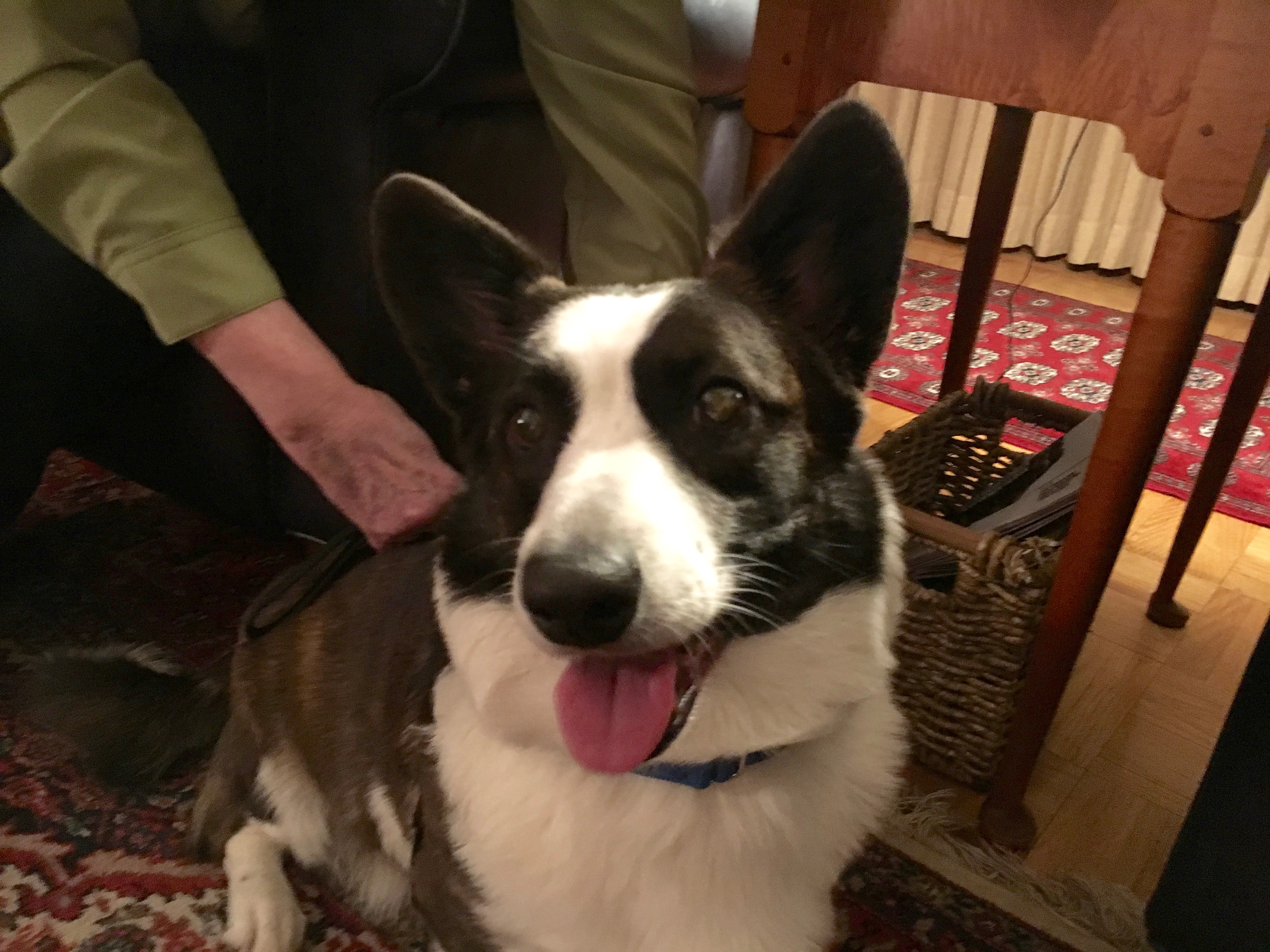Helping an Anxious Dog Create a Conditioned Emotional Response (CER) to Get Over Her Fears
By: David Codr
Published Date: December 28, 2017
For this Omaha dog training session we worked with a 3 year-old Cardigan Corgi named Kenzie; a dog who gets anxious when meeting new people (especially those who come into the home) barking at them then running away.
Kenzie was very upset when I arrived; barking and running away indicating he was an anxious dog around new people. His guardians confirmed as much when we sat down to discuss the situation.
As we chatted about his dog behavior problems, I tossed treats his way and maintained a calm and still presence while utilizing a few dog behaviorist tricks to earn his trust. You can catch some of the dog behavior tricks I used in the video below.
At first it was easy to see that Kenzie was an anxious dog; barking, backing up and circling the room while keeping her distance. It took about an hour but eventually Kenzie relaxed enough to sit down on the far side of the room. A few minutes later she was laying down. Shortly after that, I had her taking treats from my hand.
I spent a good hour going over a number of dog training tips and tricks to help the guardians stop reinforcing her anxiety and some of Kenzie’s unwanted dog behaviors. They were making a number of very common mistakes like petting or picking up Kenzie when she was nervous.
I suggested they start petting Kenzie with a purpose, reward desired behaviors via passive training and gave them some non verbal ways to disagree with unwanted actions or behaviors. I also recommended that they go to youtube and set a goal of teaching her a new trick or command each week for the next 4-8 weeks. Dogs can gain confidence through gaining new skills so this will be an important and fun part of her dog behavior modification treatment plan.
Because Kenzie was so reactive to movement, I decided to show her guardians how to use a CER or Conditioned Emotional Response which is a technique used by the best dog behaviorists around. You can get more information on using a CER to help dogs get over fear and anxiety by watching the video below.
Creating a CER is easy, and its a very effective technique for this kind of dog behavior problem, but it does take a lot of repetitions. I suggested the guardians arrange some in home visits over the next few weeks so they can practice using this technique. This person needs to have a calm energy and be able to go slowly and take direction.
The guardians and these people who will be helping out should watch the above CER instructional video right before practicing this technique and call or text me with any questions they have while putting it into action.
Based on how Kenzie was able to change her behavior as I worked on a CER, Im guessing they should be able to help this dog stop feeling anxious when guests come over to visit.
By building up Kenzie’s confidence by teaching her new tricks or commands, rewarding desired behaviors, petting with a purpose, practicing CER and stoppage of the things they were doing that reinforced her anxiety, Kenzie should learn to stay calm and confident when people come to visit her guardians.
To help the guardians remember all the tips and tricks I shared during this in home dog training session, we shot a Roadmap to success video.
Categorized in: Dog Behavior


